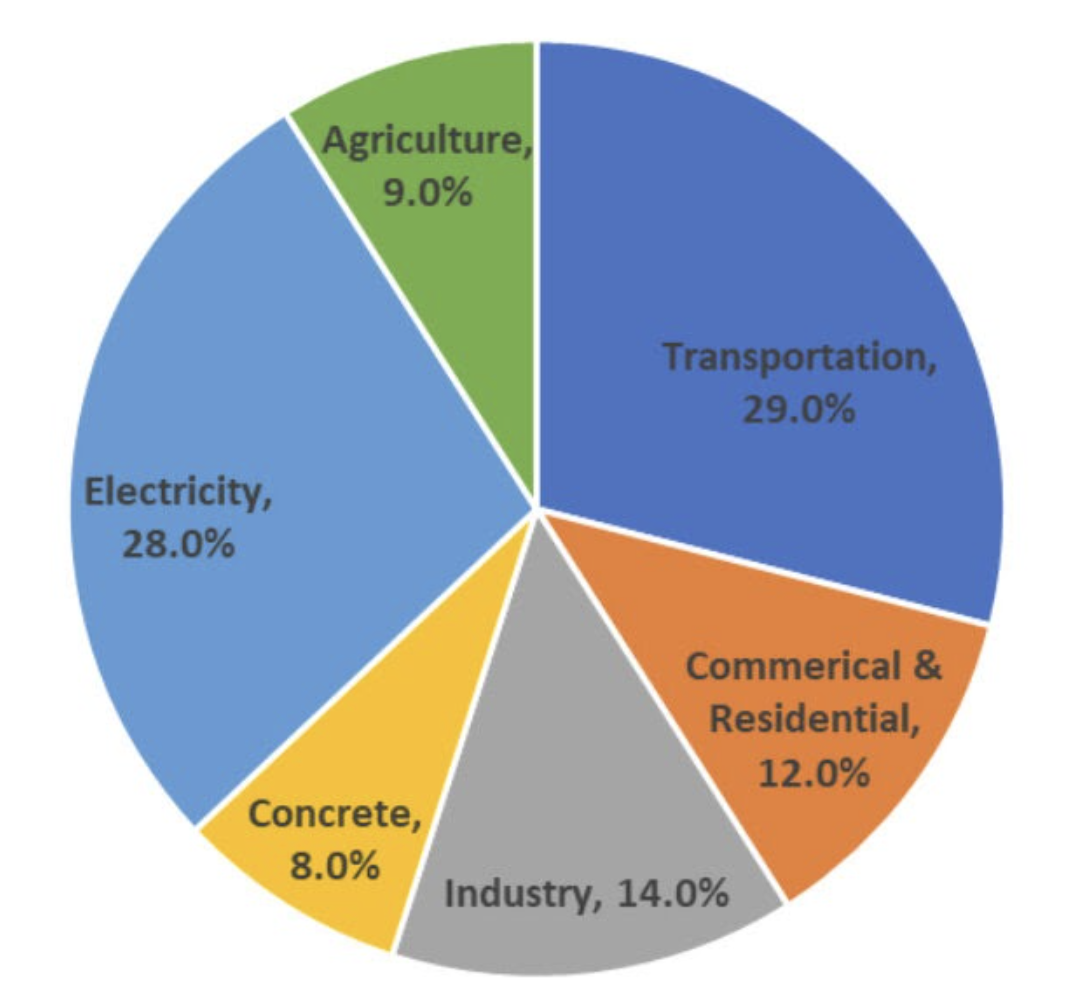Cement and Concrete: The Environmental Impact
Contributor: Keegan Ramsden
As a material that creates the majority of the world’s bridges, roads, dams, and construction, concrete releases an extreme amount CO2 each year. It’s the highest consumed product on earth besides water. Until the overall emissions are cut worldwide, the environment will continue to be polluted with over 4 billion tonnes of carbon dioxide annually due to this industry.
The Production Process of Concrete:
Concrete is constructed using cement mixed with an aggregate-- a grainy blend of materials such as stone and sand. After mixing, the concrete is poured into a mold and left to harden then use in building. The aggregates are sourced from a local body of water and crushed in a natural procedure. That process releases nearly no carbon emissions, the cement is the true problem when it comes to carbon footprint. The cement process is sole reason why the concrete industry makes up 8% of overall global emissions and 12% of emissions in New Jersey.
Cement is made by firing limestone, clay, and other materials in a kiln. CO2 is emitted from the energy used to fire the material, and the chemical reaction produced from the mixture when it is exposed to heat. According to the National Ready Mixed Concrete Association, each pound of concrete releases 0.93 pounds of carbon dioxide. Since concrete is such a widespread item, the amount of CO2 released in the industry continues to grow.
Solutions:
There are countless companies and organizations who have designed specific solutions to improve the concrete industry’s environmental impact. Many of the top grossing cement companies in the world have decided to take immediate action. These include Lafargholcim, Anhui Conch, China National Building Materials, HeidelbergCement, Cemex, and Portland Cement.
As the largest concrete company globally, Lafargeholcim has participated in respectable efforts in erasing their environmental footprint. The company has lowered carbon emissions by 25% since 1990 and has a goal to reach net-zero emissions soon. The CEO of the company states “I will not stop pushing the boundaries on our net zero journey with rigorous science-based targets. At LafargeHolcim we are accelerating circular and low-carbon solutions to lead the way in green construction.” China National Building Materials ($1.4 billion deal with British Solar Renewables) and Cemex (35% carbon reduction goal by 2030) have followed LahargeHolcim’s path in improving their footprint.
Another solution that is accessible to consumers is purchasing from the company ThalesNano Energy, a widely known machinery company. They focus on converting waste carbon dioxide into valuable products, such as chemical feedstocks or fuels, which can then be sold (carbon valorization). Cement companies could partner with ThalesNano, both earning money and finding a purpose for their excess carbon.
Another easy fix would be to use a green cement technology that is currently being used by a New Jersey-based company: Solida. This process of creating green cement would be done by taking the emitted carbon from the kiln, adding it with, and substituting that mixture in the open spaces of the previously made cement. Then, to cure the product, they put it in a room with carbon dioxide instead of water, which overall, reduces carbon emissions in cement production by 70%. This mixture takes less time to cure, is more sturdy, and requires less energy to produce, which results in a more cost-effective and efficient way to create cement. Many believe that green cement is the future of sustainable construction.
Carbon sequestration is a topic that may potentially begin. It costs a large amount of money (upwards of $600 per ton of CO2)The cement business emits more than 4 billion tons of carbon each year, so in order for us to go forward with this process, we would need a lot of money to care for the amount of carbon cement industries produce. This is a very high number for companies to take on, especially lower-income ones. Carbon sequestration could be a possibility for the future, but as of now it most likely will not be done.
The concrete industry struggles with a large carbon footprint but there are many solutions. The only struggle is depending on the consumers to choose the groups who put our climate as a priority. Information and listed solutions need to be put in the spotlight in order to improve and create a cleaner world.

